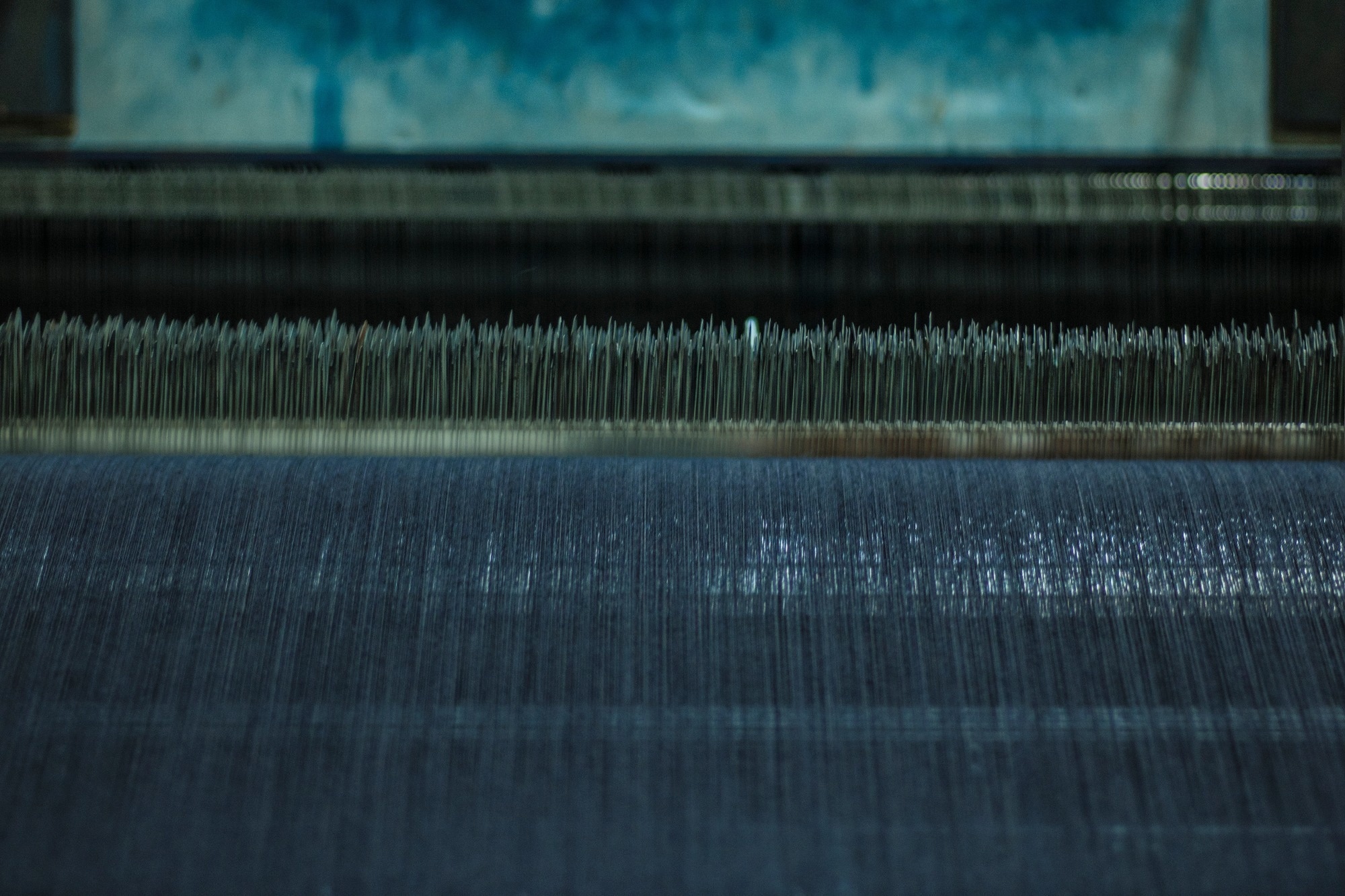In a paper published in the journal Scientific Reports, researchers explored denim fabric advancements, responding to the global demand for versatile clothing. The study focused on developing and dyeing a novel blend fabric with cotton fibers and bicomponent polyester filaments (PET/PTT). Highlighting the potential of PET/PTT filaments for enhanced elasticity and comfort in denim, the research actively evaluated their mechanical and thermal properties against traditional fabrics.
 Study: AI-Predicted Eco-friendly Dyeing Recipes for Denim Fabric using Bicomponent Polyester Filaments. Image credit: sforshahrukhkhan/Shutterstock
Study: AI-Predicted Eco-friendly Dyeing Recipes for Denim Fabric using Bicomponent Polyester Filaments. Image credit: sforshahrukhkhan/Shutterstock
Researchers examined dyeing processes and found that an ant colony algorithm effectively predicted optimal recipes for achieving uniform shades between dyed cotton fibers and polyester filaments. Notably, the one-bath/two-phase process yielded superior color results. In contrast, the one-bath/one-phase process exhibited variations due to the alkaline potential of hydrogen (pH) in reactive dyeing.
Related Work
In prior research, denim production emerged as a prominent and ever-evolving sub-sector within the textile industry. The global jeans market, forecasted by the research firm prescient & strategic to grow annually by 5.8% between 2018 and 2023, prompted denim industries to explore new alternatives for sustainable consumption, adopting the 4R strategy (reduce, repair, reuse, and recycle).
Elastane, known for its significant elastic properties, became a crucial filament in stretch denim articles, offering comfort and wearability. However, its integration posed technical challenges, requiring covering with other materials and susceptibility to wet treatments that often compromised its elasticity. Recent studies explored using bicomponent filaments as a promising alternative to elastane, showcasing their thermal comfort properties.
Multifaceted Study on Textile Dyeing
The study employed three textile supports: 100% cotton fabric (F1), cotton/PET blend fabric (F2), and PET/PTT filaments blend fabric (F3), all woven using Sulzer-type projectile weaving with a 2/2 twill weave. Mechanical tests were carried out according to the International Organization for Standardization (ISO) 13934-1 standards, utilizing a Lloyd instruments LR5K dynamometer.
Additionally, moisture management behaviors were assessed through the American Association of Textile Chemists and Colorist Test Method (AATCC TEST METHOD 195) using a moisture management tester (MMT) type M290. These initial phases comprehensively characterized the textile supports, laying the groundwork for subsequent analyses.
The dyeing processes involved the application of reactive and dispersed dyes to the blend fabric. An ant colony algorithm predicted optimal dyeing recipes to achieve uniform color shades. Researchers aimed to match the color obtained by using reactive dyes for cotton fibers with the color achieved by dispersing dyes for bicomponent filaments utilizing the algorithm.
Researchers employed the Kubelka–Munk theory and a spectraflash 600 Plus spectropolarimeter for precise color measurements. This phase marked an innovative approach to dye formulation and contributed to the overall understanding of color matching in the context of the unique fabric composition.
With its four-step procedure, the ant colony algorithm was pivotal in the study's methodology. Its application aimed to discover suitable dyeing recipes for the newly developed fabric, aligning F1 and PET/PTT coloration. The algorithm's iterative process considered concentrations of reactive dyes, ultimately minimizing color deviations between the standard obtained with dispersed dyes and the fabric's final color. This innovative approach presented a promising avenue for achieving harmonious and uniform coloration in the intricate cotton/bicomponent polyester filaments blend, demonstrating the potential of artificial intelligence in dye formulation.
Innovative Fabric Properties Analysis
The study comprehensively analyzed three fabric types' mechanical and thermal properties: 100% F1, F2, and PET/PTT F3. Mechanical tests revealed that F3, incorporating bicomponent filaments, exhibited superior elasticity and comfort compared to traditional fabrics. The high elongation percentage of F3 highlighted the excellent elastic recovery of the bicomponent filaments, contributing to the fabric's softness and the wearer's comfort.
Researchers utilized AATCC TEST METHOD 195 to evaluate the thermal comfort properties of the cotton/bicomponent F3. Results indicated favorable characteristics, including excellent moisture transport capacity and overall moisture management capability. The fabric addressed challenges associated with elastane filaments, offering good thermal comfort properties. Comparative analysis further emphasized F3's superior performance in thermal comfort, making it a promising choice for denim articles that combine elasticity, recovery, and comfort.
The study addressed the challenge of achieving uniform color shades for cotton and bicomponent filaments. Researchers developed an ant colony algorithm to predict optimal dyeing recipes for the blended fabric actively. The algorithm successfully aligned the color obtained with reactive dyes for cotton fibers with that achieved by dispersing dyes for bicomponent filaments. The predicted recipes demonstrated the algorithm's efficiency in minimizing color deviations and presented a viable solution for achieving harmonious coloration in the cotton/bicomponent polyester filaments blend.
Dyeing processes using the predicted recipes were executed, with results confirming the algorithm's effectiveness. The one-bath/two-phases and two-baths/two-phases processes exhibited superior color yield and minimal color differences. Notably, the study highlighted the compatibility of dispersed and reactive dyes, offering economic and ecological benefits. The use of p-vanillin in the dyeing process did not pose issues, showcasing the potential for an economical and clean dyeing process, particularly in the one-bath/two-phase approach.
In conclusion, the study demonstrated the promising mechanical, thermal, and dyeing properties of the F1/PET/PTT. The innovative approach of utilizing an ant colony algorithm for dye formulation showcased potential advancements in achieving uniform coloration and minimizing environmental impact in textile manufacturing.
Conclusion
In summary, this study introduced a novel fabric blend of cotton and bicomponent polyester filament, showcasing superior mechanical and thermal properties compared to traditional fabrics. The research encourages the integration of bicomponent filaments into denim and proposes an eco-friendly one-bath/two-phase dyeing process. The developed ant colony algorithm effectively predicted precise dye recipes, minimized corrections, and promoted sustainable dye formulation for blend fabrics.